Biography of the Right Honourable Roméo LeBlanc P.C., C.C., C.M.M., O.N.B., C.D.
Governor General: 1995-1999
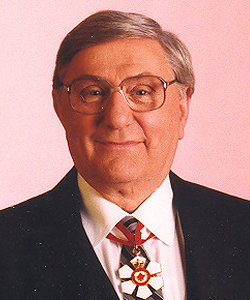
- Biography
- A Career in Journalism
- From the Back Benches to the Ministry
- Life in the Senate
- The Legacy of a Caring Canadian
- Canada's 25th Governor General
- LeBlanc Scholarship
Biography
Born in 1927 to Phillias and Lucie LeBlanc, Roméo LeBlanc was the youngest child of seven. His early years were spent on a subsistence farm during the Depression. He so impressed his elementary school teachers, they persuaded the local college that he should be educated further. He graduated with a B.A. in 1948 from University of St. Joseph's College, New Brunswick, and went to work in Montreal for $14 a week as one of the editors for Jeunesse étudiante catholique (a newsletter for Catholic students).
However, after his sibling Léonard was disabled in a car accident in 1949, Roméo LeBlanc returned home to assist the family. In 1950, he went back to St. Joseph's College for a B.Ed. which would allow him to teach in the New Brunswick high school system. He taught at Drummond in the north of New Brunswick from 1951 to 1953. In 1953, he won a France-Acadie scholarship to study at the Sorbonne, where Professor Bruneau, an eminent professor of linguistics, recognized his talent and organized Roméo LeBlanc's registration for a doctorate and supported him in his application for a further scholarship from Royal Society of Canada. He was successful and registered for a doctoral thesis "Teaching French in a bilingual district of Canada: New Brunswick, a case study."
In the spring of 1955, his eldest brother died of a brain tumour, leaving a widow and six children. Roméo LeBlanc once more went back to the farm and helped to stabilize the family financially.
He taught at the Provincial Normal School in Fredericton from 1955 until 1959. During these years, he came to know the English community in Fredericton well and built friendships among the Acadian communities throughout the province.
A Career in Journalism
In 1959, he began employment as a journalist at Radio-Canada in Ottawa. His starting position with Radio-Canada was a public affairs correspondent. A year later, he was promoted to covering the Parliamentary Press Gallery, with occasional work at the United Nations. Between 1962 and 1965, assignments took him to London where he was responsible for dispatches covering the European Economic Union (EEC), Algeria and Cyprus. In 1965, he was the founding President of the CBC Radio-Canada Foreign Correspondents Association. That year, he was posted to Washington, where he was accredited to the Pentagon as well as the White House, and accompanied President Johnson on his visit to Vietnam.
In 1967, Roméo LeBlanc became Prime Minister Lester Pearson's Press Secretary. Prime Minister Trudeau continued this appointment, which Roméo LeBlanc held until 1971, throughout the tumultuous months of the October Crisis and its aftermath.
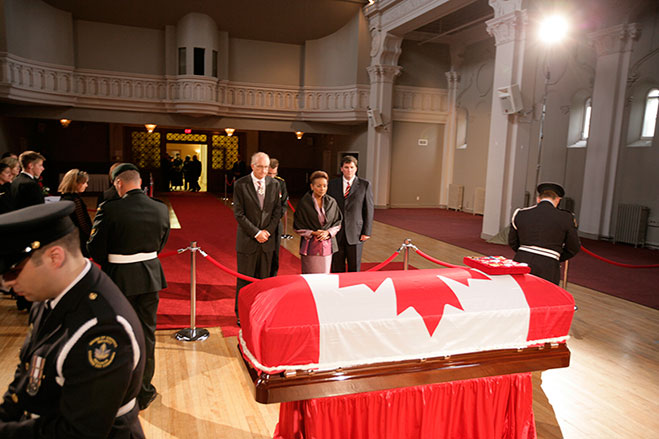
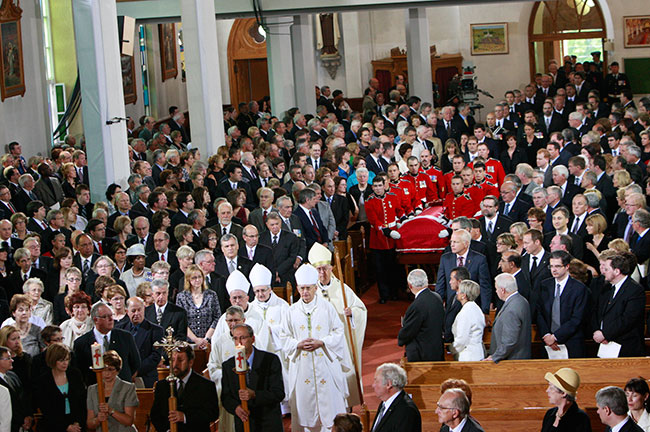
From the back benches to the Ministry
In 1971, he returned to New Brunswick, serving as Assistant to the President and Director of Public Relations for the University of Moncton. Then in 1972, he took his first step into the political arena; he was elected as Member of Parliament for Westmorland-Kent, N.B. Roméo LeBlanc was re-elected in 1974, 1979, and 1980, representing the riding until 1984.
Under various titles, he served as Minister of Fisheries in three of Prime Minister Trudeau's Cabinets, becoming Canada's longest serving minister in this position. It was under his watch that Canada's coastal fishing zone was extended from 12 to 200 miles (19.3 km to 321.8 km). He was also responsible for the strong role that Canada played in the Law of the Sea conferences from 1974-1979. From 1974-1982, he was a member of the Cabinet Committee for External Affairs and Economic Affairs; from 1974-1984 a member of the Communications Committee and its chairman from 1976-1981; from 1975-1984 he was a member of the Priorities and Planning Committee. In 1982, he was appointed Minister of Public Works and the Minister responsible for the Canadian Mortgage and Housing Corporation and the National Capital Commission.
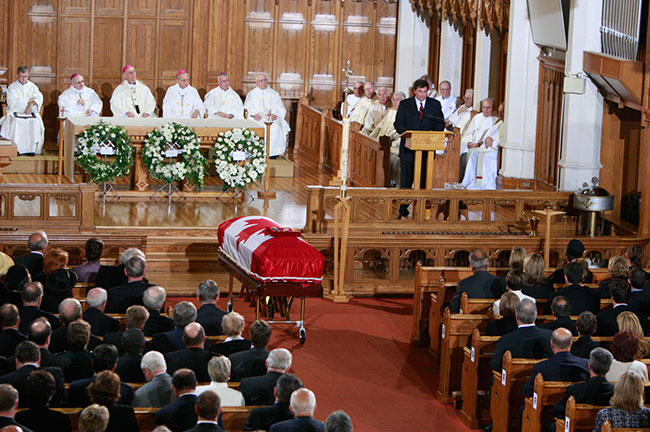
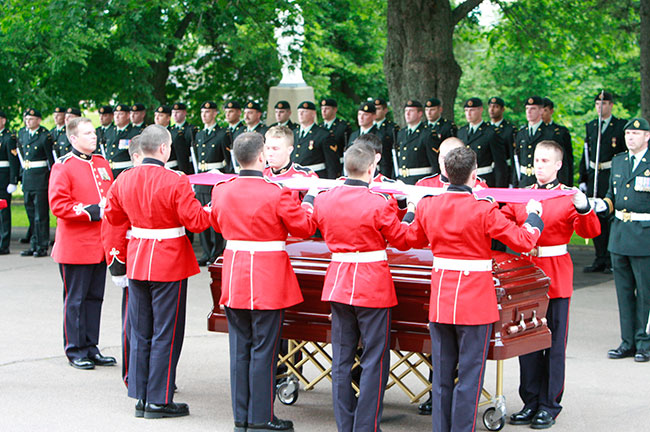
Life in the Senate
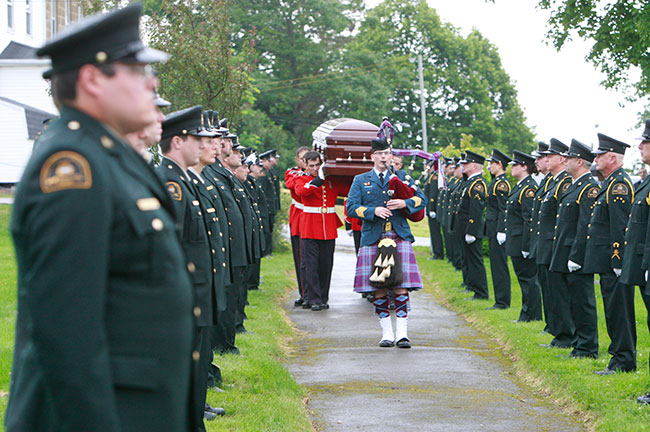
He was appointed to the Senate in 1984 by Prime Minister Trudeau. In 1985, he was appointed as a visiting scholar in the Institute of Canadian Studies at Carleton University and over the next five years, delivered a number of guest lectures at various Canadian universities.
He was elected by the Senate as Chairman of the Standing Committee on Internal Economy, Budgets and Administration in 1988, at the beginning of the first session of the 34th Parliament. He also sat on the Foreign Affairs Committee and on the Sub-Committee on Security and National Defence, and was a member of the Canada-France Parliamentary Association and the International Association of French-speaking Parliamentarians.
Roméo LeBlanc's work in the Senate included a great deal of international activities and considerable work on the regulation of the pharmaceutical industry in Canada. He was appointed Speaker on December 7, 1993.

When receiving foreign dignitaries or representing Canada abroad, he emphasized the efforts that Canadians made to build an identity that reflected our core beliefs, the rule of law, and the need to strive for a caring and just society. He also saw Canada as a country that would celebrate, rather than fear, diversity. As an Acadian, he was convinced that Canadian institutions and values allowed individuals to preserve distinctive cultural heritage as part of a vibrant and united nation.
During the four years he was Governor General, Roméo LeBlanc visited many countries, including the Czech Republic, the Netherlands, France, Guyana and Mexico. He was the first Canadian Governor General to make a state visit to India and Pakistan. In 1999, he was again the first Canadian Governor General to make a state visit to Africa, where he visited Senegal, the Côte d'Ivoire, Tanzania, and Mali. That year, he also represented Canada at the funeral of King Hussan II of Morocco.
The Legacy of a Caring Canadian
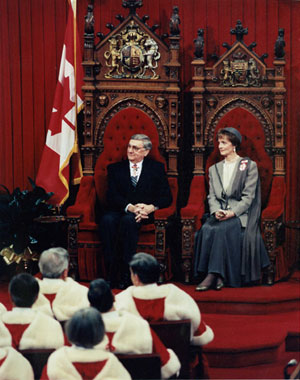
In his installation speech, Roméo LeBlanc said "If I am to be known for anything, I would like it to be for encouraging Canadians, for knowing a little bit about their daily, extraordinary courage. And for wanting that recognized." Installation speech, February 8, 1995.
He achieved this ambition when he launched the Governor General's Caring Canadian Award in 1996. The award recognizes the everyday courage and dedication of ordinary people, caregivers, family members who cared for a loved one, and people who have made extraordinary contributions to their families, communities or country. Since its establishment, almost 500 volunteers and caregivers across this country have received this award. Governor General LeBlanc recognized dozens of recipients in 14 different ceremonies while visiting communities across the country.
While it can be said that he achieved one of his ambitions with this award, Roméo LeBlanc achieved something else of immense value, not only during his years as Governor General but throughout his life: he showed that with honour, one may tread a path from humble beginnings to hold the highest office in the land, and live a life that exemplified love of country, personal humility and integrity.
Canada's 25th Governor General
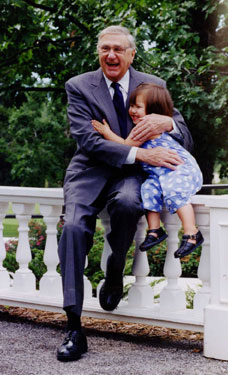
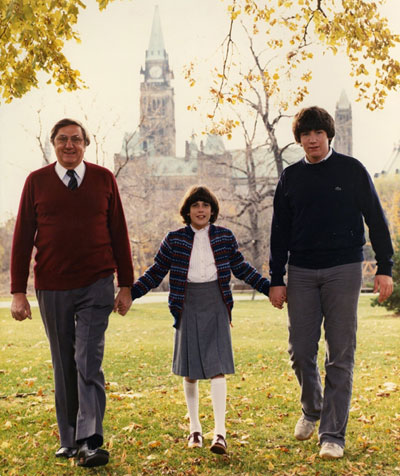
After less than a year in office as Speaker for the Senate, on February 8, 1995, Roméo LeBlanc was appointed Canada's 25th Governor General of Canada, a position he held until October 1999. He was the first Acadian and first Maritimer to serve. He and his wife, Diana Fowler LeBlanc, whom he married in 1994, undertook a vigorous schedule of activities that took them across Canada and abroad.
Within Canada, he focussed his attention on teaching Canadians about themselves; the history of Canada and the stories of the people who had created it were at the heart of his speeches. With regard to Aboriginal people, he stated, " ... that all of Canada owed them a debt that is four centuries old. It is their turn to become full partners in developing an even greater Canada." He continued: "And the reconciliation required may be less a matter of legal texts than of attitudes of the heart." Speech on the occasion of the presentation of the 1996 Native Role Models, February 23, 1996.
LeBlanc Scholarship
The LeBlanc family invites those who wish to make a donation online by visiting
the Université de Moncton website at www.umoncton.ca/umce-anciens and clicking
on "Pour faire un don." People may also send a donation to the following address:
Université de Moncton
Anciens et développement
anc-dev@umoncton.ca
Tel: 506-858-4130 ou 1-888-362-1144
Fax: 506-858-4108
www.umoncton.ca/umce-anciens
Notice: Restrictions on the Government of Canada's liability apply.